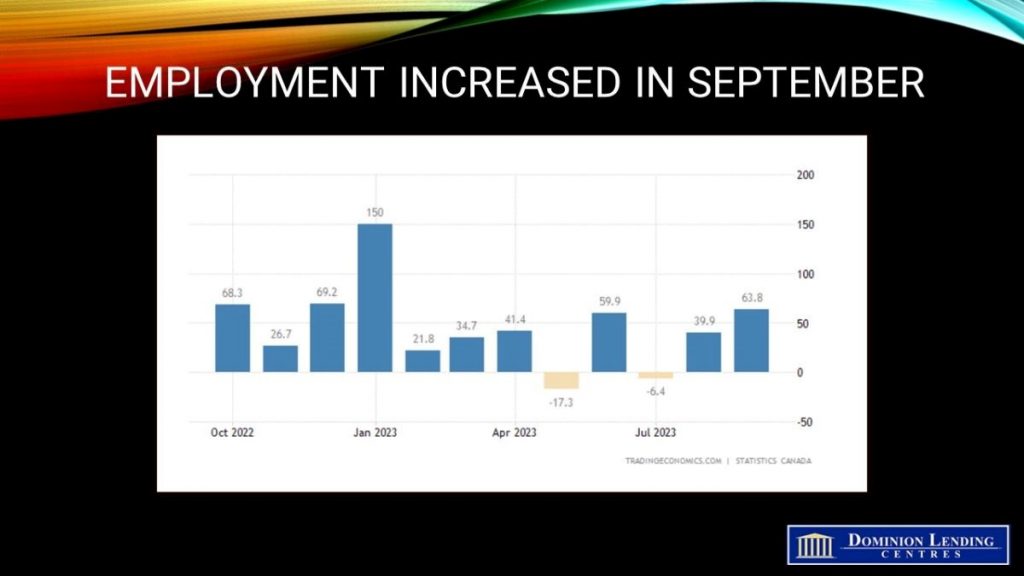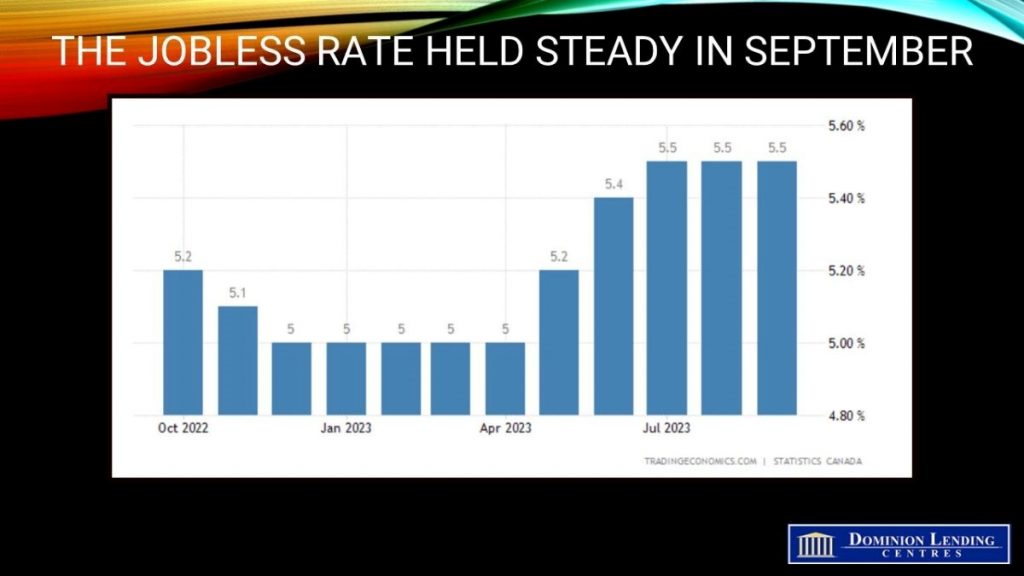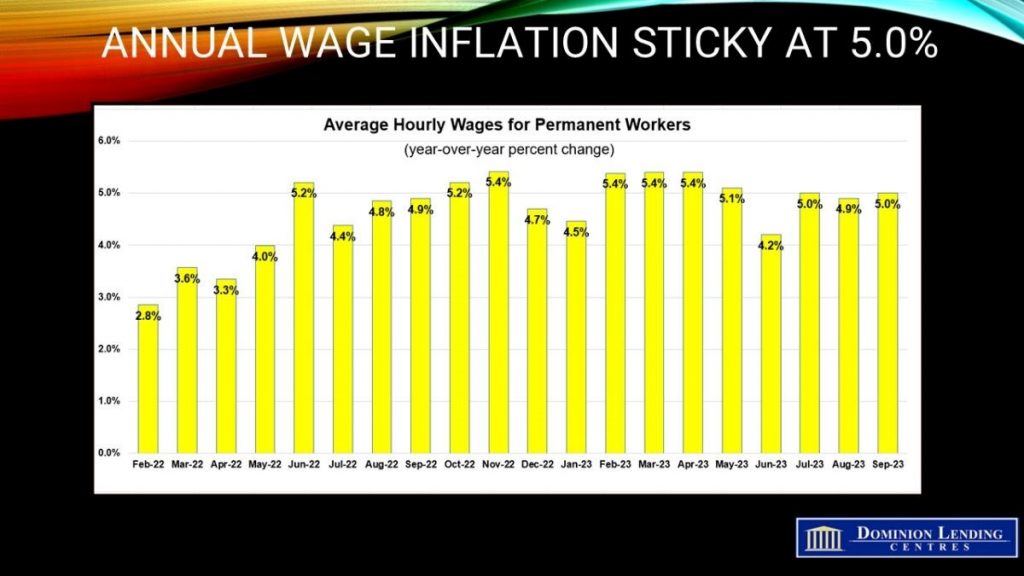Articles
Posted on October 6, 2023
Strong September Jobs Report Will Test Bank of Canada’s Patience
Another Strong Jobs Report Tests BoC’s Patience
Canadian employment rose by a whopping 63,800 in September, tripling market expectations. The underlying data put the strong job growth into perspective. Most of the gains in overall employment were in part-time work, and total hours worked declined by 0.2%. Moreover, the unemployment rate held steady for the third consecutive month at 5.5% due to a surge in the labour force.
The country’s population rose by 2.9% in the year ending July 1, one of the world’s fastest growth rates, bringing the number of residents to 40.1 million. The jump was driven by the largest recorded increase in temporary residents in data going back to 1971. Many of these temporary workers, foreign students and immigrants will opt to remain in Canada, increasing the pressure on Canadian housing markets. The number of non-permanent residents in Canada — including people on work or study permits and refugees — is now 2.2 million, or more than 5% of the total.
Even more notable for the Bank of Canada was the continued upward pressure on wages. Average hourly earnings increased by 5.0% y/y last month. Workers are pressing for higher wages in many sectors as increases in compensation have yet to keep up with inflation. Key unions, such as auto and health care employees, are striking in the US. The favourable deal cut after the writers’ strike portends broadening labour market unrest.
Policymakers will continue scrutinizing incoming economic data to determine if the current interest rates are sufficiently high to return inflation to 2%. They are particularly concerned about substantial wage gains perpetuating wage-price spiralling.
Bottom Line
The Bank of Canada will maintain its tightening bias when it meets again on October 25th. Today’s report will not likely trigger another rate hike but will keep the central bank on edge.
The recent rise in market-driven interest rates, particularly at the longer end of the yield curve, reflects the strength in the U.S. economy and continued jitters about inflation and the chaos in Congress. Today’s employment report in the U.S. was very strong.
The U.S. jobs data are consistent with a meaningful acceleration in U.S. GDP growth in the third quarter. U.S. bond yields are at the upper end of their one-year trading range, and Canadian government bond yields generally follow U.S. trends. The Fed is widely expected to raise rates at least one or two more times.


